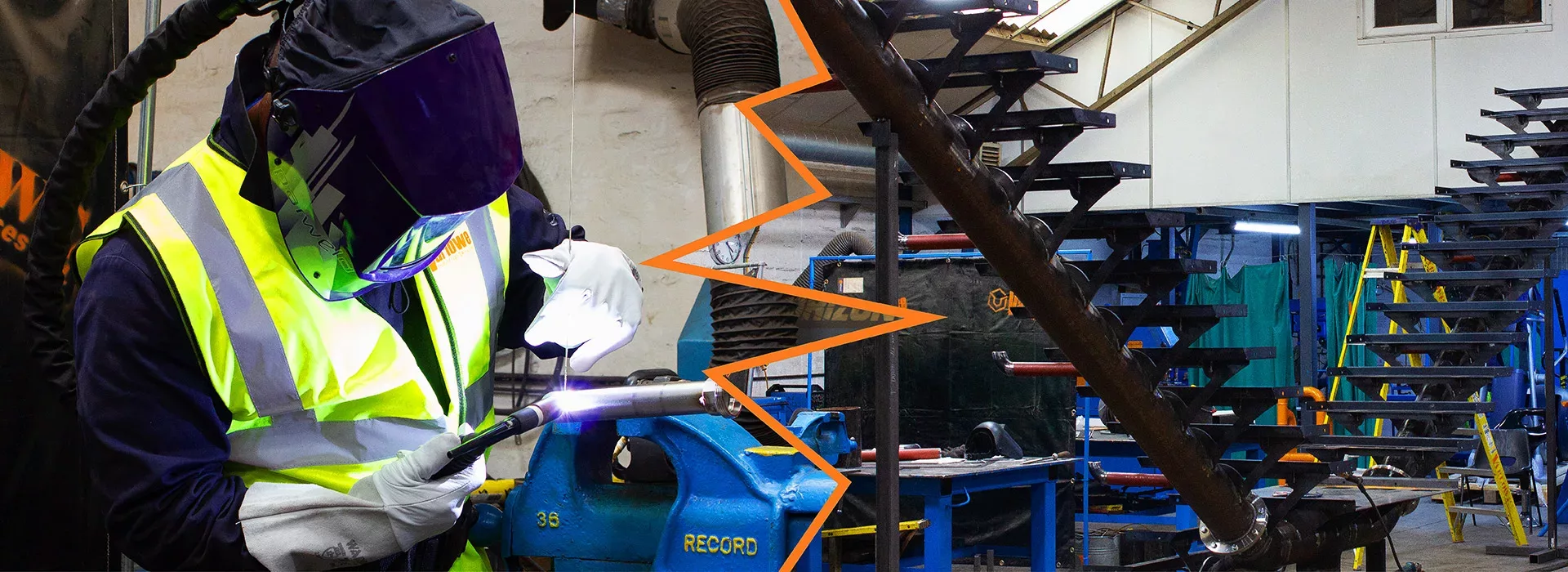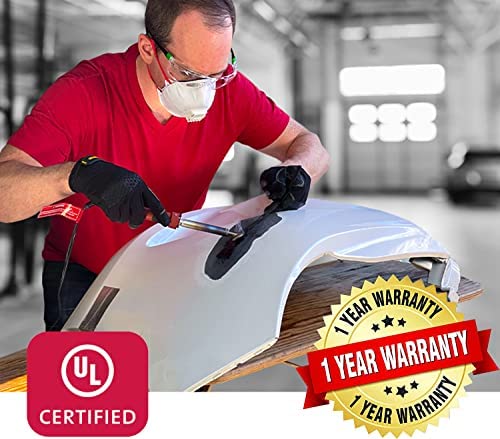All About Welding: Key Insights Into Techniques and Ideal Practices for Success
Welding encompasses a selection of methods, each matched for specific materials and applications. Comprehending these approaches, such as GMAW, SMAW, and TIG, is essential for accomplishing optimal results. Furthermore, the right tools and safety and security practices can not be forgotten. As preparation and troubleshooting play crucial duties in the welding process, mastering these components can considerably improve the high quality of the final product. What are the essential factors that assure an effective weld?
Comprehending Different Welding Techniques
Welding methods incorporate a variety of methods, each fit to certain applications and products. Among one of the most usual techniques are Gas Steel Arc Welding (GMAW), Secured Steel Arc Welding (SMAW), and Tungsten Inert Gas Welding (TIG) GMAW, additionally referred to as MIG welding, is prominent for its rate and flexibility, making it ideal for slim products. SMAW, or stick welding, is preferred for its simplicity and performance in outside settings, specifically with thicker metals. TIG welding supplies accuracy and control, making it ideal for intricate work and non-ferrous steels (Montana Mobile Welding and Repair Fabrication). Each strategy has its distinct advantages and factors to consider, enabling welders to select the very best approach based on the task's needs, material kind, and desired results. Recognizing these techniques is crucial for effective welding
Necessary Welding Tools and Tools
While different welding strategies call for certain skills, the right devices and tools are similarly essential for attaining top quality results. Essential welding equipment consists of welding devices, which differ relying on the method-- such as MIG, TIG, or stick welding. Safety equipment, consisting of gloves, safety helmets, and aprons, assurances security and convenience during the process. Additionally, clamps and fixtures aid protect products in location, guaranteeing precision in welds. Consumables like welding poles, cord, and securing gas are likewise essential parts that affect the top quality of the weld. Devices such as grinders and cutters facilitate surface prep work and post-weld finishing, contributing to a professional result. Investing in top quality devices inevitably boosts the effectiveness and effectiveness of welding projects.
Security Practices in Welding
Correct security techniques are vital in the welding sector to protect employees from prospective dangers. Welders have to use ideal individual safety tools (PPE), consisting of headgears with appropriate shading, gloves, and flame-resistant clothes. Adequate air flow is crucial to decrease direct exposure to harmful fumes and gases generated during the welding process. In addition, employees ought to be trained in the proper handling of welding tools to avoid accidents. Fire security procedures, such as keeping combustible materials away from the welding area and having fire extinguishers easily offered, are necessary. Routine evaluations of tools and work spaces can assist determine possible risks before they lead to mishaps. By sticking to these safety and security techniques, welders can produce a safer working atmosphere and minimize threats related to their trade.
Readying Products for Welding
Preparing products for welding is a vital action that substantially influences the top quality and stability of the final item (Belgrade). Appropriate preparation entails cleansing the surface areas to eliminate impurities such as oil, dirt, and rust, which can jeopardize the weld. Strategies such as grinding, fining sand, or making use of solvents are generally utilized to accomplish a clean surface. Additionally, ensuring that the materials fit with each other well is essential; voids can cause weak welds. It's also vital to think about the placement and positioning of the elements, as this will certainly influence the simplicity of welding and the last outcome. Ultimately, picking the appropriate filler material and making certain compatibility with the base metals is necessary for attaining solid, sturdy welds
Tips for Getting High-Quality Welds
Accomplishing top quality welds needs interest to information and adherence to ideal practices throughout the welding procedure. Proper joint preparation is necessary, making sure surfaces are cost-free and tidy from contaminants. Picking the proper filler material and welding technique based upon the base metals is important for perfect bonding. Keeping constant travel speed and angle while welding can stop problems and advertise uniformity. Furthermore, managing warm input is necessary; extreme heat can result in warping and compromised joints. Consistently checking the welds during the process permits immediate adjustments if necessary. Ultimately, employing proper post-weld treatments, such as cleaning and anxiety alleviation, can improve the longevity and honesty of the weld, inevitably making certain an effective outcome.
Troubleshooting Usual Welding Issues
Welding typically provides difficulties that can impact the quality and honesty of the last product. Typical concerns such as porosity, inconsistent weld beads, and overheating can emerge, each requiring details troubleshooting methods. Recognizing these issues is vital for welders to boost their abilities and accomplish perfect outcomes.
Porosity Issues Discussed
Although porosity can typically be forgotten, it stays a critical issue in welding that can compromise the integrity of a completed product. Porosity describes the visibility of tiny gas pockets within the weld bead, which can lead and weaken the joint to early failure. This problem normally arises from contaminants, moisture, or inappropriate protecting gas insurance coverage during the welding process. To alleviate porosity, welders should validate that the base products are tidy and completely dry, make use of appropriate shielding gases, and preserve regular welding specifications. Routinely examining the equipment and setting can likewise help identify potential concerns prior to they show up in the weld. Addressing porosity effectively is crucial for achieving strong, resilient welds that satisfy top quality standards.

Irregular Weld Beans
Irregular weld beads can considerably influence the quality and toughness of a finished product. Numerous variables contribute to this concern, including inappropriate traveling rate, inaccurate amperage setups, and irregular electrode angles. When the welder relocates too swiftly, a grain might appear narrow and lack penetration, while moving as well gradually can cause excessive accumulation. Furthermore, making use of the wrong amperage can result in either damaging or extreme spatter, both of which compromise weld stability. The welder's strategy, such as inconsistent lantern activity, can additionally bring about uneven bead appearance. To minimize these troubles, welders need to concentrate on keeping consistent, regulated activities and making certain proper devices setups to accomplish uniformity in their welds. Uniformity is key to achieving trusted and solid welds.
Getting Too Hot and Warping Issues
Too much heat during the welding process can lead to substantial getting too hot and buckling issues, impacting the structural stability of the work surface. These troubles frequently manifest as distortion, which can endanger alignment and fit-up, making additional setting up testing. Aspects adding to overheating include the choice of welding specifications, such as voltage and travel speed, as well as the kind of product being bonded. To alleviate these problems, welders must maintain consistent travel speed and appropriate heat input while keeping track of the work surface temperature level. Furthermore, preheating or post-weld warmth treatment can assist relieve stresses created by fast cooling - Belgrade. Regular examination and adherence to finest techniques are crucial in stopping overheating and guaranteeing the longevity and integrity of welded structures
Regularly Asked Questions
What Are the Career Opportunities in the Welding Industry?
The welding industry uses varied occupation chances, including placements as welders, inspectors, engineers, and educators. Experts can operate in manufacturing, building, aerospace, and vehicle markets, taking advantage of solid need and competitive salaries in various roles.
How Can I Enhance My Welding Speed Without Sacrificing Top Quality?
To improve welding rate without giving up high quality, one should practice reliable methods, maintain equipment, maximize settings, and improve hand-eye coordination. Routine training and seeking feedback can also significantly add to accomplishing faster, high-grade welds.
What Accreditations Are Readily Available for Welders?
Numerous accreditations exist for welders, including those from the American Welding Society (AWS), the National Facility for Building check here Education And Learning and Research (NCCER), and numerous industry-specific organizations. These qualifications improve employability and demonstrate ability effectiveness.
Just How Does Welding Impact the Properties of Metals?
Welding affects the properties of steels by changing their microstructure, which can bring about adjustments in stamina, ductility, and solidity. Warm input and cooling prices throughout the procedure considerably affect these material features.
Can I Bonded Dissimilar Metals With Each Other?

Comments on “Why overheating affects welds and Montana Mobile Welding and Repair Welding’s approach to fix it”